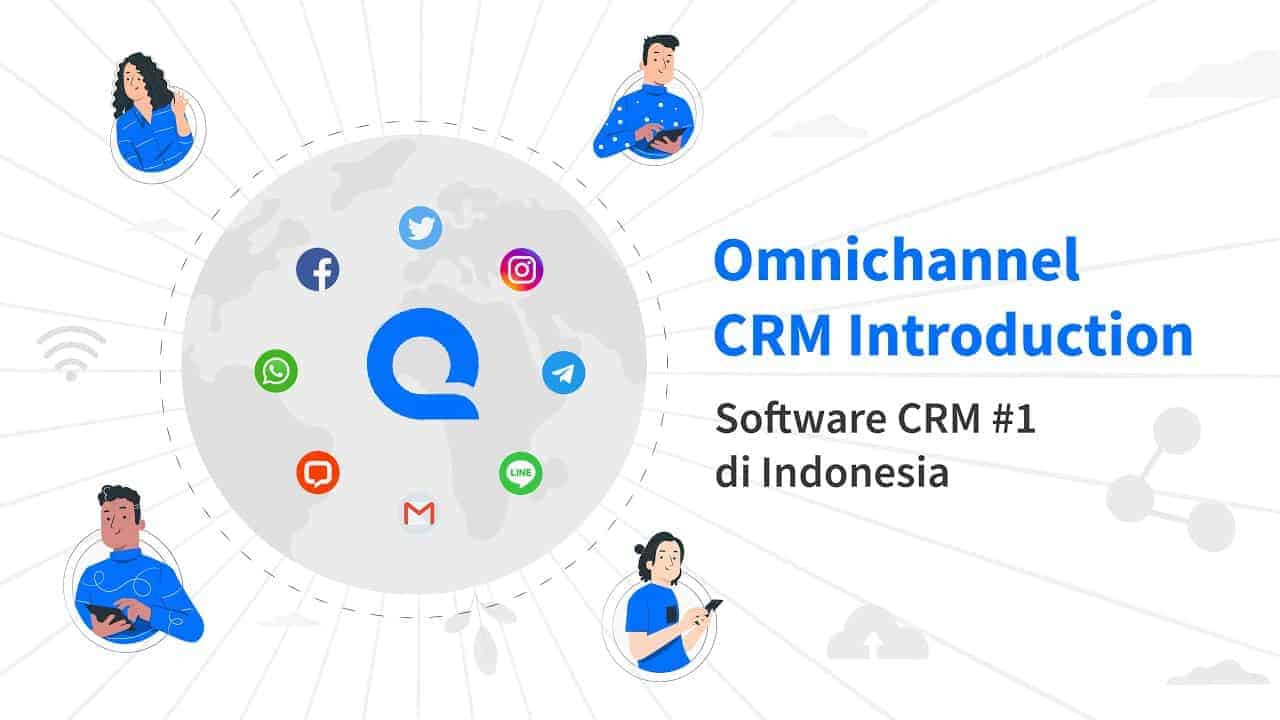
In the modern world of business, holding onto customers is a top priority. Think of the retention rate as a measurement tool that tells us how skilled a company is at keeping its customers coming back for more.
For businesses, maintaining a high customer retention rate is essential because it leads to increased sales, revenue, and customer loyalty.
This article will take a closer look at customer retention, explaining why it is important, and sharing ways we can measure it effectively.
What is customer retention?
Customer retention is all about a company’s skill in making its customers stay loyal. This percentage-based measure tells us how good a business is at holding onto its customers.
Customer retention can be influenced by how many new customers a business attracts and how many customers choose to leave, cancel subscriptions, not return, or end agreements.
As a result, maintaining a high customer retention rate is crucial for businesses to boost their sales, increase revenue, and foster strong customer loyalty.
A Good Customer Retention
Customer retention, in simple terms, is like keeping your friends close. It’s the art of keeping your existing customers happy and loyal to your business for the long haul. Why is this so important?
Well, it’s because these loyal customers are the ones who keep coming back to buy your products or use your services, which is fantastic for business.
A good customer retention rate varies, but higher is usually better. It means your customers stick around, and your strategies are working. Aim for a high score to keep your business thriving.
Read more: Strategy to Improve Customer Retention
Why is customer retention important?
Based on research, an impressive 68% of a company’s sales stem from its existing customers.
These loyal customers tend to share their positive experiences and continue making purchases. Therefore, it’s imperative for businesses to prioritize customer retention.
Moreover, there are several significant reasons why customer retention holds paramount importance for businesses:
- Revenue Growth: Keeping loyal customers leads to ongoing purchases of products and services, ensuring a stable and growing income for the business.
- Informed Insights: The longer customers stay, the more feedback the company gathers, allowing for a deeper understanding of customer preferences and needs.
- Budget-friendly: It’s usually cheaper to keep existing customers happy compared to finding new ones. Acquiring new customers can cost a business five times more.
- Positive Recommendations: Satisfied customers are more likely to recommend the business to others, leading to new customers and increased revenue.
- Greater Returns: Loyal customers keep buying, resulting in higher profits and a better return on the company’s investments.
- Long-term Success: Building and maintaining customer relationships are essential for the business’s long-term prosperity
- Brand royalty: Consistently meeting or exceeding customer expectations can create brand loyalty and give the business an edge over competitors.
The 5 key factors of customer retention
When it comes to customer retention, there are five important factors to keep in mind.
To make sure they stick around, you need to consider these five important factors:
1. Quality Products or Services
You want your friends to enjoy spending time with you, right? The same goes for your customers. Offer them top-notch products or services to keep them happy and satisfied.
2. Effective Communication
Staying in touch is essential for any good friendship, including the one you have with your customers. Effective communication keeps them informed and engaged.
Use various channels like emails, newsletters, or social media to maintain a strong connection.
3. Gather Feedback
Friends value each other’s opinions, so seek feedback from your customers. Understand what they like and dislike about your offerings and use this input to make improvements.
4. Loyalty Programs
Loyalty programs are like giving your friends little gifts to show appreciation.
In business, they offer perks like discounts or rewards to your loyal customers, making them feel special and encouraging their continued support.
5. Problem Resolution
Friendships encounter bumps, and issues may arise. In the same way, address customer concerns and resolve problems promptly and effectively. Show your commitment to making things right.
How to measure customer retention?
Making sure your customers stick with your company is a big deal for its success. That’s why it’s crucial to figure out how good you are at keeping your customers.
To do this, you’ll want to keep an eye on certain things called “customer retention metrics” listed below:
1. Customer Retention Rate
The first thing to check is how well you’re keeping your customers over time. It takes a while to know if your plan to keep them is working.
To do this, you should figure out how many customers stick with you for a set period, like each month, every semester, or every year.
But you can measure it using the following formula:
Customer Retention Rate = ((NCE – NEW) / NCS)) X 100
This formula is expressed as a percentage and is calculated for a specific period, such as by week, month, or year.
- NCE = Number of Customers by the End of the period
- NEW = New Customers acquired during the period
- NCS = Number of Customers at the Start of the period
2. Customer Churn
Customer churn is a way to find out which customers are leaving a business. We usually show it as a percentage.
To calculate it, you count how many customers left during a certain time and divide that by the total number of customers you had at the start of that time.
Customer Churn Rate = (Customers Lost) / (Total Customers)
3. Revenue Churn Rate
The Revenue Churn Rate is a way to figure out how much money your business lost from existing customers during a certain time.
This can happen when customers cancel orders, switch to
cheaper plans, or stop doing business with you.
Revenue Churn Rate = (Lost Revenue) / (Total Revenue)
4. Existing Customer Revenue Growth Rate
This rate shows how fast the money you get from your current customers is increasing.
You can find it by looking at the money you got from your existing customers in one period and subtracting what you got in the period just before it.
This also shows that your customers see the value in what you offer pretty quickly.
Existing Customer Revenue Growth Rate = (New Revenue from Existing Customers) / (Old Revenue from Existing Customers)
5. Repeat Purchase Ratio
The Repeat Purchase Ratio (RPR) shows how many customers come back to buy more from your company.
Marketing and sales teams use this number to see how well the company is keeping customers coming back.
While it’s usually for products, you can use the same idea for things like subscriptions or contract renewals.
Repeat Purchase Ratio = (Repeat Customers) / (Total Customers)
6. Product Return Rate
The Product Return Rate is a way to figure out how many of your products are being sent back by customers.
While products can be returned for various reasons, too many returns are not good.
So, companies aim to keep this rate as low as they can, ideally close to zero.
Product Return Rate = (Returned Products) / (Total Products Sold)
7. Days Sales Outstanding
Days Sales Outstanding (DSO) tells you the average number of days it takes for customers to pay their bills after you’ve billed them.
DSO helps you see how well your business manages customer payments and how loyal your customers are to your company.
If customers take a long time to pay their bills, it might not be great for your customer retention strategy.
So, it’s important to keep an eye on DSO and see if it’s going up, and then figure out how to tackle that issue.
DSO = (Accounts Receivable) / (Average Daily Sales)
8. Net Promoter Score (NPS)
The Net Promoter Score (NPS) is a way to measure how much your customers like your brand.
When you figure out your NPS, it tells you if your customers are happy and if they’d tell others about your product or service.
NPS can be measured with this formula:
NPS= % Promoters – % Detractors
Typically, you measure this using a scale from 1 to 10. People who answer 1 to 6 are not very happy (called detractors), those who pick 7 or 8 are kind of in the middle (neutral), and those who choose 9 or 10 are really happy (promoters).
9. Loyal Customer Rates
The Loyal Customer Rate tells you how many customers keep coming back to shop with you within a certain timeframe.
It shows the percentage of your customer base that’s sticking with your business and being loyal.
Loyal Customer Rate = Number of Repeat Customers / Total Customers
10. Customer Lifetime Value
Customer Lifetime Value (CLV) is a way to figure out how much money one customer brings in.
Ideally, you want your CLV to stay the same or go up. If it’s shrinking, it means you either have customers who don’t spend much or you’re losing customers faster than before.
Customer Lifetime Value = (Average Value Per Customer) X (Customer Lifespan)
Important Reminder: While these metrics are helpful, it’s essential to look at them in the context of your specific company, industry, and the kinds of customers you serve. To get a comprehensive view of customer retention, it’s best to use multiple measurements.
Customer Retention Efforts from Brands
And now that you are equipped with the steps to measure customer retention, let’s explore how top brands are excelling in customer retention through their strategic efforts.
1. Starbucks
Starbucks adopts a variety of strategies to keep customers coming back.
Their loyalty program, My Starbucks Rewards, offers points for purchases, driving repeat visits and a sense of exclusivity.
Mobile ordering and personalized recommendations enhance convenience and engagement.
Innovation is key, with a constantly evolving menu and cozy in-store environments.
Starbucks’ community engagement and commitment to social responsibility resonate with socially conscious consumers, building loyalty.
Global accessibility ensures customers can rely on Starbucks worldwide.
Through digital engagement and product innovation, Starbucks maintains a strong connection with customers, encouraging repeat business and long-term loyalty.
2. Netflix
Netflix keeps its subscribers hooked with smart strategies. They offer a wide range of top-quality content, personalized recommendations, and exclusive originals.
They offer flexible pricing, global reach, and free trials to engage and keep subscribers.
Their constant innovation, great customer service, and data-driven decisions all work together to make sure customers stick around and keep streaming.
They set a strong example for businesses seeking to build lasting customer loyalty.
3. Apple
Apple’s customer retention strategy revolves around its seamless product ecosystem and top-notch quality.
Exceptional support, regular software updates, and a strong emphasis on privacy and security enhance user satisfaction.
Exclusive services like Apple Music and Apple TV+ keep users engaged within the Apple ecosystem.
Apple’s emotive branding and global presence solidify customer loyalty, establishing it as a leader in customer retention.
Empowering Customer Retention through Mekari Qontak!
However, it’s essential for businesses to keep track of customer retention. A high customer retention rate is a sign that a business is successful at keeping its customers content with its offerings.
To measure customer retention, businesses can utilize tools like Omnichannel and CRM, conveniently available in comprehensive solutions like Mekari Qontak.
These tools empower businesses to gain a deeper understanding of their customers and foster stronger connections, resulting in increased customer satisfaction and loyalty.








